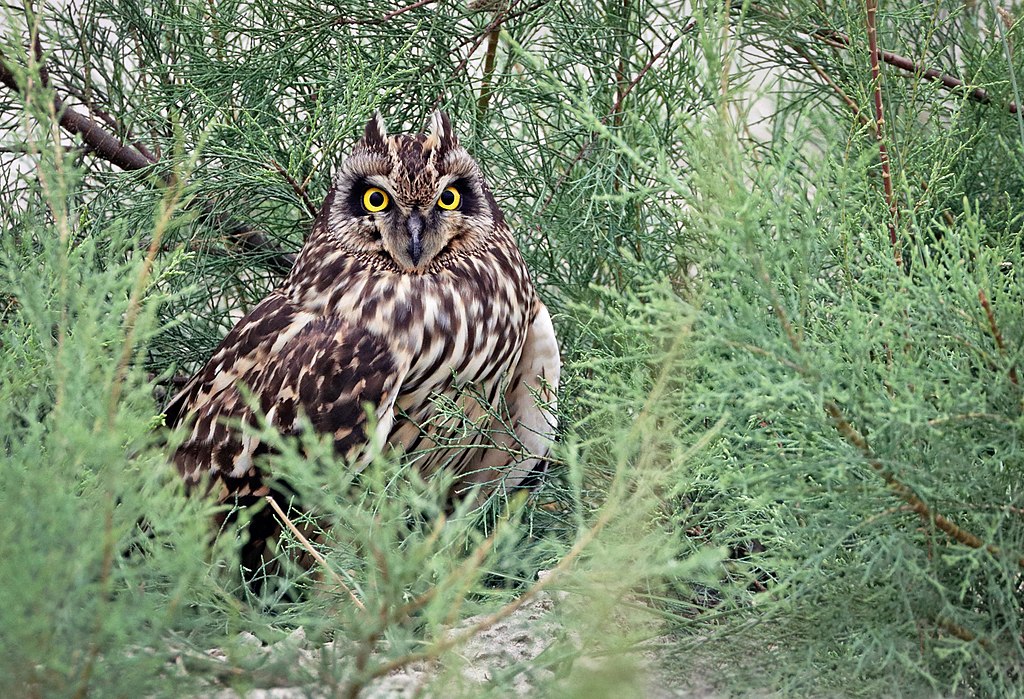Why medieval Europeans used to put “bad” animals on criminal trial

- We all ascribe intentions to animals. Be that a mischievous cat or a “good boy” dog, we often talk about animals as moral actors.
- Humans have a long, weird history of putting animals on trial — from the case of the Satanic rooster to child-killing pigs.
- There are good philosophical reasons to believe animals can behave morally.
You’re sitting on the sofa — feet up, glass in hand, and feeling relaxed for the first time all day. Suddenly, like some jungle predator, your cat jumps up on your book case. With tail-swishing swagger, she moves along to the photo frame, pausing to look at you. There’s something in her eyes. Some intent. With the most callous of tiny nudges, she paws your photo off the shelf and it shatters on the ground. She did that deliberately, you think. She always does things like that.
We often ascribe intention to animal behavior, whether it be contrary cats, naughty dogs, or wild horses. We conceptualize them as agents who deliberately choose to do this or that. When we look into the eyes of our pets or those animals in a zoo, we see intelligence looking back.
So, the question is, to what extent can we treat animals as moral agents who deserve punishment or praise (and not simply as a conditioning technique)? How far are they responsible? And why is Colonel Kittens such an ass?
Cow do you find the defendant?
Believe it or not, humans have a long history of putting animals on trial. Since as early as the 13th century, animals of all sorts across Europe were eligible to be charged with criminal offenses, assigned lawyers, and be given sentences, including death. Historians have proposed varying explanations for exactly why medieval Europeans held animal trials, though one common explanation holds that the Church wanted to do everything they could to broadcast a sense of control over law, order, and justice to the public.
In France in 1386, a pig was executed after having “indulged in the evil propensity of eating infants on the street.” A century later, some rats were brought to trial for wantonly destroying and eating the district crops.
In Switzerland in 1474, a rooster was charged with laying an egg. It was, after all, well known that cocks’ eggs were used by witches and sorcerers to do their evil things. The defense for the confused chicken rested on the fact that the “laying of the egg was an involuntary act.” But that was no good. The rooster was charged with being in league with the Devil, and summarily burned at the stake (and, presumably, featured as the main course at its own wake).
In France in 1750, a donkey and a man were both charged with bestiality. Witnesses testified to the good character of the donkey, and the animal was ultimately acquitted. The man was not.
(If I ever find myself having a bad day, I try to imagine life as the lawyer Pierre Ducol, who in 1545 had to defend a colony of weevils from the angry prosecutions of local wine growers. As it happens, 40 years later, the weevils were granted their own plot of land in perpetuity!)
Today, animals are almost never subject to official criminal proceedings. (Almost never: In 2004, a bear named Katya was sentenced to 15 years in prison for mauling two people. She was released in 2019.) But should we really let animals off the hook that easily when they do “bad” things?
A certain doubtfulness
It’s easy (and fun) to mock these odd moments in legal history, but they raise an interesting philosophical question about animals’ moral responsibility. We will punish a dog, for example, for eating what shouldn’t be eaten or defecating outside of their designated plot (after a time when “they should know better”). We often assume animals possess some kind of culpability, at least after a certain degree of training.
The question is pretty easy to answer for low-level intelligences — from viruses all the way up to weevils. While we often talk about things like cancers or HIV “wanting” to spread, this is mostly figurative and poetic anthropomorphism. But there comes a point when the metaphor becomes literal. As we dive deeper “down” the animal intelligence (or sentience) ladder, things get much vaguer.
The philosopher Bertrand Russell highlighted the problem when he wrote:
“I was once assured by a fisherman that ‘Fish have no sense nor feeling.’ I failed to find out how he had acquired this knowledge… common sense admits an increasing doubtfulness [about animal mindedness] as we descend in the animal kingdom, but as regards human beings it admits no doubt.”
Animal intentions
So, how should we understand “animal agency”? From a basic Darwinian perspective, all animals have strategies to meet certain goals, like mating or eating. They have an end in mind, and they operate a means to achieve it. However, this kind of “behaviorism” risks reducing terms like “belief” and “desire” so far as to be unrecognizable to how we understand them. A bacterium does not intend to do things; it operates in a much more systematic, reactive kind of way. We want to say that agency requires a degree of complexity, or some kind of minimal and necessary requirement.
Yet you do not have to go far into the animal kingdom to see surprising depth of mental processes. Darwin, for instance, was fascinated by worms. He noticed how worms could pull leaves, sticks, and plant matter into their burrows, regardless of the size. The plugs were too perfect to be sheer chance. He discovered that worms perform a kind of trial and error on pulling strategies, eventually settling on a preferred approach.
He wrote, “If worms have the power of acquiring some notion, however rude, of the shape of an object and of their burrows, as seems to be the case, they deserve to be called intelligent; for they can act in a manner as would a man under similar conditions.” If humans are the measure of mindedness, and animals behave as would a human, then we ought to ascribe to them some kind of minimal mindedness.
Moral reasons
We often judge the merit of an action based on its motivations. If I help a friend out of kindness, that’s good. If I break a window because I hate my neighbors, that’s bad. But animals clearly do act from “moral reasons.” After a hard day at the office, you might find yourself in a ball, sobbing and looking generally distraught. Then, along comes a wagging, hopeful little canine to come and help. Your dog will jump on you, lick at you, and nuzzle your hand. In this case, the dog is acting to help you because it “wants” you to be better. It is acting from compassion — an undeniably “moral reason.”
As the philosopher Mark Rowlands argues: “…at least some animals exhibit a broad repertoire of behaviors that can correctly be regarded as moral. These include being fair, showing empathy, exhibiting trust, and acting reciprocally.”
Animals cannot act “meta-cognitively” — they can’t ask what they should or shouldn’t do in a given situation. Rather, they are simply pushed this way or that by sentiments. But that does not make certain animals incapable of moral agency. Being motivated by moral reasons, and acting from moral sentiment, makes you a moral actor.
Jonny Thomson teaches philosophy in Oxford. He runs a popular account called Mini Philosophy and his first book is Mini Philosophy: A Small Book of Big Ideas.





